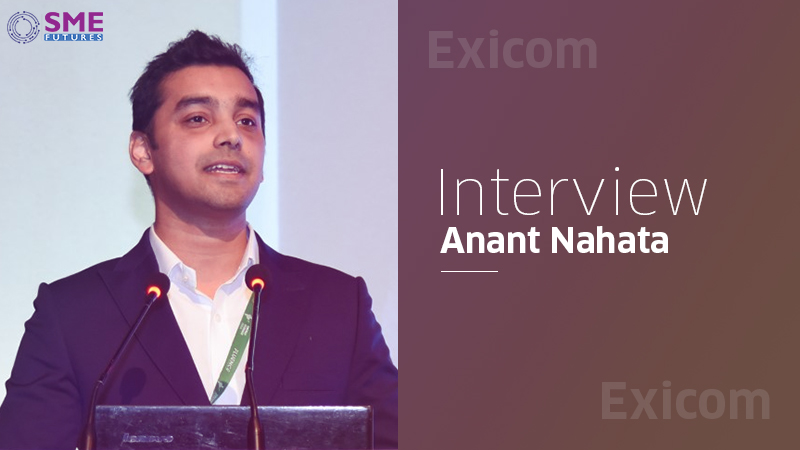The government has made it quite clear that it wants India to be a major market for electric vehicles (EVs) in the future; and has set some ambitious targets for it. However, several challenges remain. India, unlike the US and China, is still far behind in terms of creating proper charging infrastructure for electric vehicles – and, this could be one of the major challenges that may hinder the government’s 30 per cent EV mobility dream by 2030.
Keeping this in mind, the government’s recently approved Rs 10,000-crore FAME (Faster Adoption and Manufacturing of (Hybrid &) Electric Vehicles in India) II scheme plans to provide incentives for laying of charging infrastructure in the country.
“Effective deployment of charging infrastructure based on a sustainable operating model is necessary for accelerating adoption of EVs,” says Anant Nahata, managing director at Exicom Power Solutions, an EV infrastructure solution provider. In an interaction with SME Futures, Nahata talks about the state of EV charging infrastructure in India, the kind of opportunities this new segment in the mobility block brings to the stakeholders, and more.
Edited Excerpts:
How EV charging infrastructure market is evolving in India, and who are the stakeholders?
At present, the EV charging infrastructure market is driven by public sector companies that buy chargers in bulk. But there are private charge point operators as well that have made their mark in this market with deployment of chargers. Currently, homes and offices are two primary charging locations; however, both sources involve challenges in terms of access to private parking locations, load enhancement etc. These issues will be addressed by setting up of public charging infrastructure. While original equipment manufacturers (OEMs) are offering home-charging solutions with EV purchases, widespread public charging stations will continue to play big role in reducing the range anxiety [the fear that EVs have insufficient range to reach its destination] among consumers.
In order to reduce the cost barrier in terms of setting infrastructure for AC and fast DC charging public infrastructure and providing the financial assistance to companies, the Department of Heavy Industries (DHI), in July 2019, issued an expression of interest for inviting proposals from private, state governments and PSUs for deployment of charging infrastructure – that will be subsidized under FAME II scheme. This move is to ensure that there is a skeleton infrastructure in place to support the roll-out of EVs in India.
What is the demand forecast for different types of EV charging systems in the country?
The industry is evolving – and there’s no clear winner yet in terms of specifications, standards, and approach to EV charging. As an enabler, we can ensure that we have the broadest range of charging options available for ready deployment. Of course, the specifications (Bharat EV Charger AC-001 and Bharat EV Charger DC-001) released by DHI, followed during the various tendering processes, are readily available for vehicles up to 100V battery capacity; while battery capacity above 100V, CCS and CHAdeMO are going to be the dominating standards that will be followed in India. In some developed markets, we believe home charging and workplace charging will dominate the EV charging space.
India is yet not have a standard for EV charging stations. Are there any plans for setting up standards, what’s the update?
In November 2017, DHI finalized the specifications for the EV charging stations to be used for the vehicles using less than 100V battery. The specifications finalized GB/T as the primary standard to be used for the DC charging stations for public use. Though, the protocols for vehicles operating on more than 100V has been finalized by the Government of India via notification by the Ministry of Power in December 2018. Bureau of Indian Standards is working on the detailing of the protocol as a standard; and as part of which, it has already issued IS 17017-1 which is general specification for EV chargers. BIS is working on finalizing the full set of standards.
According to some news reports, Reliance Industries is looking to roll out EV charging stations on their proposed petrol pumps in India. How do you foresee this move for India’s EV charging market?
All major oil companies, including Reliance, in India have been into the business of fuel retailing for decades, and EV charging will undoubtedly become an important part of their business in future. We expect oil companies would continue to be in the retail business, even for the EVs.
Power is the major pre-requirement for setting up charging stations but it’s still a challenge in many regions. What are the initiatives that are being taken on the power distribution front?
In order to assess the expected impact of EVs uptake on grids, a comprehensive survey or study needs to be done at local distribution level. It is important to understand whether the transformers have enough capacity available to take the additional load of the EVs, which is a non-static load. Additionally, the distributed energy resources (DERs) are expected to play a vital role in the way we generate and consume electricity. With increasing solar photo-voltaic (PV) penetration and plummeting solar-plus-storage costs, the commercial and industrial consumers are expected to install more and more DERs that will help them to reduce their dependence on grid power and diesel generators. We are, therefore, expecting the market for batteries for commercial and industrial PV users.
What are the other challenges in the EV charging infrastructure market, and what are the demands of the developers?
As Indian market is suited to various technological options, policymakers may face a challenge to carve out an option in the initial phase to enhance private sector participation. Effective deployment of charging infrastructure based on a sustainable operating model is necessary for accelerating the adoption of EVs. Currently, low uptake of EVs results in lower asset utilization of charging stations, and further, due to apprehension on standards of electric vehicle supply equipment (EVSE), the investors are skeptical of deploying such an infrastructure. In order to address this issue, BIS had set up a committee that is expected to issue full set of standards in few months-times.
Which is better – direct charging or battery swapping infrastructure?
Direct charging and battery swapping can’t be compared as it all depends on the application and use case for which the technology is being deployed. Currently, cars follow standardized protocols (CCS, CHAdeMO and GBT – DC001), where one of the three globally accepted protocols are opted by the vehicle manufacturers, and hence one need to have all these three protocols in order to cater to all segment of cars.
Bus is a different market altogether where charging is done at the depot and is captive. Two-wheelers and three-wheelers do not have any standard for charging. Different manufacturers use different standards, and apart from providing 15Amp socket for charging through AC001, there is nothing much one can provide – hence, battery swapping plays a big role here. There are plenty of use cases for battery-swapping. Delivery companies and ride-sharing companies, which are going electric, are betting on battery swapping as a solution for two-wheelers and three-wheelers, rather than charging.











